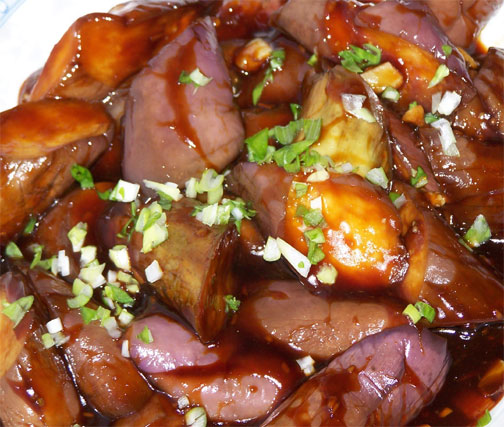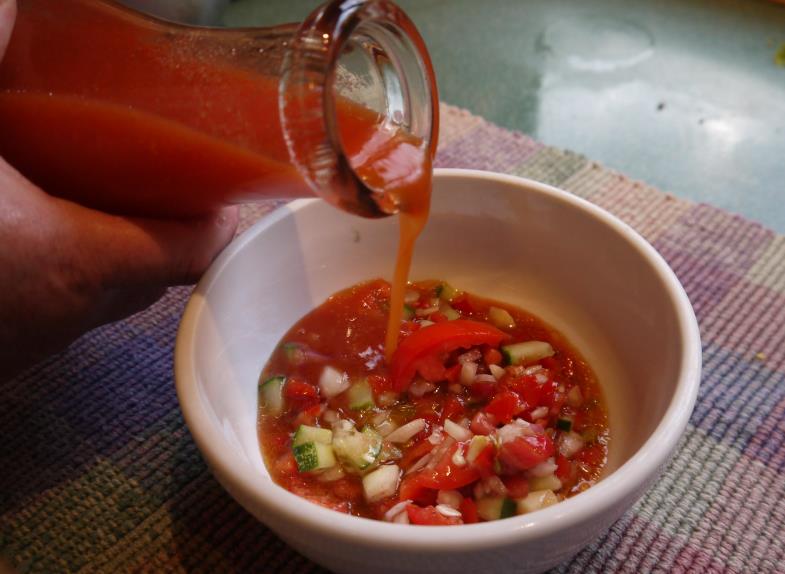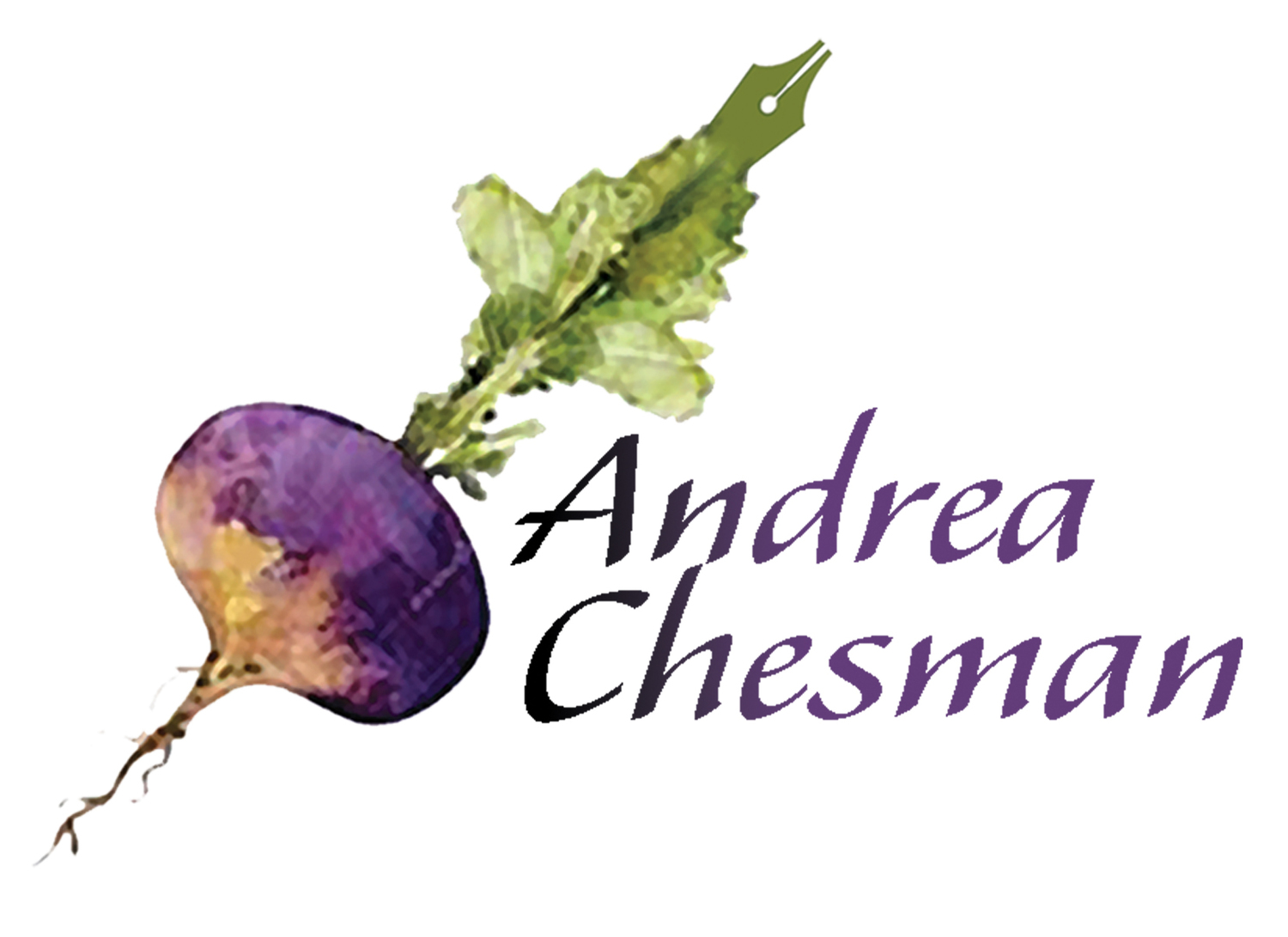 Some of the eggplant are in pots.
Some of the eggplant are in pots.We planted an eggplant garden this year. Twenty-six eggplant plants, nine varieties. There are Japanese eggplants, Chinese eggplants, Thai eggplants, Italian globe eggplants. There are Little Fingers, Black Beauties, Oriental Longs, Kermits, Rosa Bianca, Pingtung Long, and Oriental Gourmet. We are not growing any African eggplant, because these are too tropical for our climate.
Eggplants are an Old World nightshade, unlike the tomato, chile, and potato, also nightshades but of New World origins. The earliest records of eggplant in Chinese and Sanskrit date back 2000 years, according to Elizabeth Schneider’s excellent reference book, Vegetables from Amaranth to Zucchini. She explains that the eggplant was introduced to Japan in the eight century and to Europe in the thirteenth. The variety that was introduced to North America was indeed white and egg-shaped and valued more as an ornamental than a vegetable. Which may explain why Americans have been so slow to adopt eggplants.
But thanks to the influence of immigrants and their cuisines, Americans are now growing some sixty-six different varieties of the eggplant berry (eggplant is a berry), of which we are growing a sampling. You’d think we’d be planning to do some seed saving, but the fact is, most of these varieties are hybrids. And, it seems that eggplant cross-pollinates quite readily, so any seeds we saved would be unlikely to breed true. But from a cook’s point of view, I wouldn’t have wanted to be a seed saver. Because the dreaded bitterness for which the eggplant is known and despised is a function of fully developed seeds.
 This row of eggplant is in front of a trellis of pole beans.
This row of eggplant is in front of a trellis of pole beans.
Indeed, much of what I learned about cooking eggplant is just plain wrong, as I have come to appreciate since growing my own. Eggplant fresh from the garden doesn’t have to be peeled, unlike some supermarket specimens that have been waxed to extend its shelf life. And a fresh, young eggplant doesn’t require salting to drain away bitter juices, because it isn’t bitter. Finally, eggplant do much better sitting on a kitchen counter than being placed in the refrigerator. At 50°F or lower, the eggplant flesh will turn brown.
It mystifies me when someone tells me that don’t like eggplant, because the eggplant flesh is mild, hardly something that should inspire a distaste. But oh, it is a sponge for flavors, which is why we can’t get enough of my Soy-Sesame Eggplant, sometimes served up plain (with rice, of course) and sometimes combined with a stir-fried meat. (Just prepare the Soy-Sesame Eggplant and set it aside to marinate in its dressing. Stir-fry matchsticks of chicken, pork, beef, or whole shrimp and dump in the eggplant at the end.)
The original version works with grilled or broiled eggplant. It's all good.
Soy-Sesame Eggplant
 Soy-Sesame Garlic
Soy-Sesame Garlic
When you are looking for a make-ahead vegetable dish that can be served at room temperature, consider the eggplant. In this case, slices of eggplant are grilled or broiled, then combined with a spicy marinade featuring soy sauce and Chinese chili paste with garlic. It’s not the most beautiful dish in the world, but a scattering of cilantro and scallions brightens the dark colors of soy and eggplant. The flavor is intense and delicious.
Three pounds of eggplant is about two large globe eggplant. This dish works well with any variety of eggplant. If the eggplant is long and curved, like some varieties are, it may be more convenient to slice the eggplant horizontally.
Eggplant
3 pounds eggplant, cut into cubes
3 tablespoons peanut or canola oil
Marinade
5 tablespoons soy sauce
2 tablespoons sesame oil
2 tablespoons mirin, rice wine, or sake
1 tablespoon rice vinegar
1 tablespoon chili paste with garlic
1 tablespoon sugar
2 garlic cloves, minced
Garnish
3 scallions, whites and tender greens, finely chopped
3 tablespoons fresh chopped cilantro
1. Heat a wok over very high heat. Add the oil and heat until it shimmers. Add the eggplant and stir-fry until cooked through, about 5 minutes. Transfer to a medium-sized bowl.
2, Combine the soy sauce, sesame oil, mirin, vinegar, chili paste, sugar, garlic, and in a small bowl. Mix well. Pour over the eggplant and toss to mix.
3. Let stand at least 30 minutes to allow the eggplant to absorb the flavors of the marinade. You can hold this dish in the refrigerator for up to day, but bring to room temperature. Just before serving, sprinkle with the scallions and cilantro.
Adapted From Serving Up the Harvest by Andrea Chesman. ©2007, 2009 Andrea Chesman. All rights reserved.








